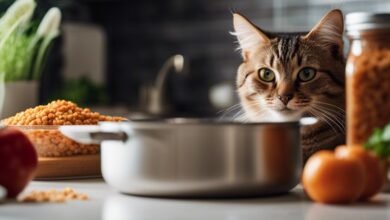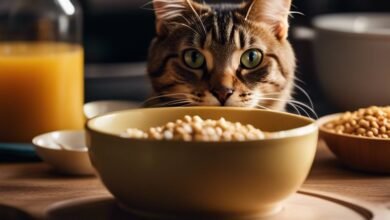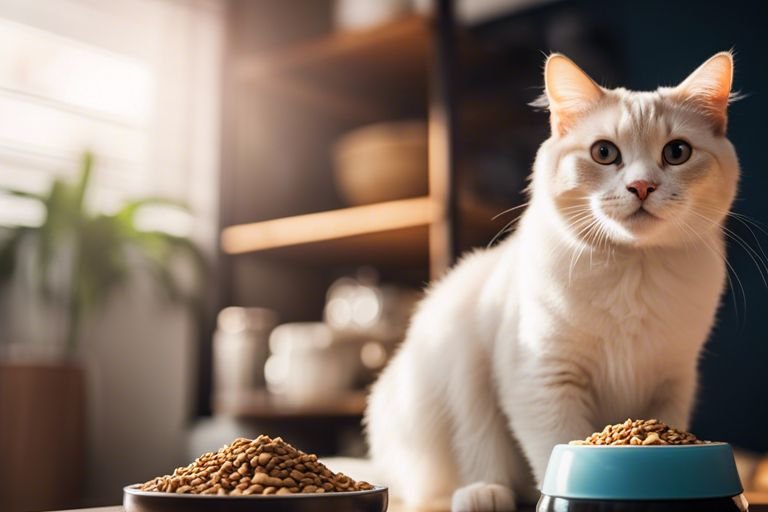
Gluten-free wet cat food can have a big impact on your cat’s health and happiness. Choosing this type of food is a great option to consider, as it provides a variety of benefits for your furry friend. In this article, we will discuss why gluten-free wet cat food is a tasty and nutritious choice for your cat, offering important nutrients without any harmful ingredients. Let’s take a closer look at the advantages of choosing gluten-free wet cat food for your beloved pet.
Key Takeaways:
- Gourmet Experience: Gluten-free wet cat food offers a delicious and nutritious gourmet experience for your feline friend.
- Improved Digestion: Cats with sensitivities to gluten can benefit from easier digestion and reduced gastrointestinal issues with gluten-free wet food.
- Healthier Coat and Skin: The high-quality ingredients in gluten-free wet cat food can contribute to a shinier coat and healthier skin for your pet.
- Weight Management: Gluten-free wet cat food can be a great option for weight management, as it often contains high protein content and necessary nutrients without unnecessary fillers.
- Allergy Relief: By eliminating gluten from your cat’s diet, you may see a reduction in allergy symptoms and overall improvement in their health and well-being.
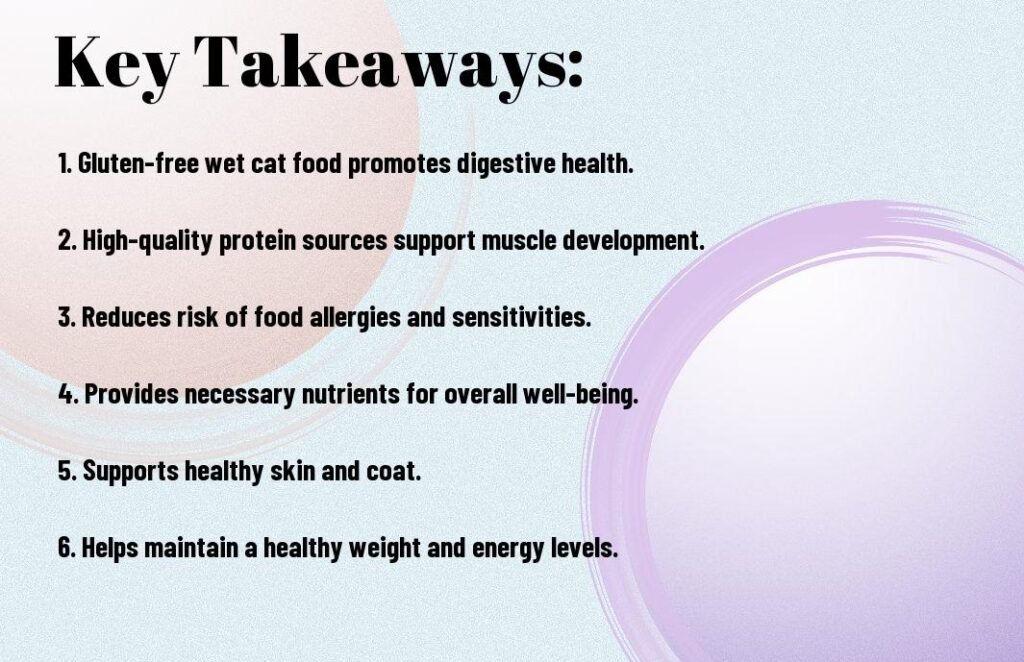
The Importance of Nutrition in Feline Health
Your furry feline friend deserves the best when it comes to their nutrition. Just like humans, cats require a balanced diet to thrive and live a healthy life. Providing your cat with a high-quality, nutritious diet is imperative for their overall well-being and longevity.
The Role of Protein in Cat Diets
To support your cat’s health, protein plays a crucial role in their diet. Cats are obligate carnivores, which means they require a diet high in animal protein to meet their nutritional needs. Protein is imperative for maintaining your cat’s lean muscle mass, supporting healthy growth and development, and providing energy for their daily activities. When choosing a cat food, look for options that list a high-quality protein source, such as chicken, turkey, or fish, as the primary ingredient.
The Benefits of Whole Foods for Cats
Any cat owner knows that their feline friend can be quite selective when it comes to food. Offering your cat whole foods, which are minimally processed and closer to their natural state, can have numerous benefits. Whole foods retain more nutrients compared to highly processed foods, ensuring that your cat receives imperative vitamins, minerals, and antioxidants for optimal health. By incorporating whole foods into your cat’s diet, you can provide them with a more balanced and wholesome meal that mimics their ancestral eating habits.
Whole foods, such as lean meats, fruits, and vegetables, can offer a variety of textures and flavors that can entice even the pickiest of cats. Additionally, these foods can contribute to better digestion, healthier skin and coat, and overall vitality for your beloved pet. So, go ahead and treat your cat to the goodness of whole foods for a happier and healthier feline companion.
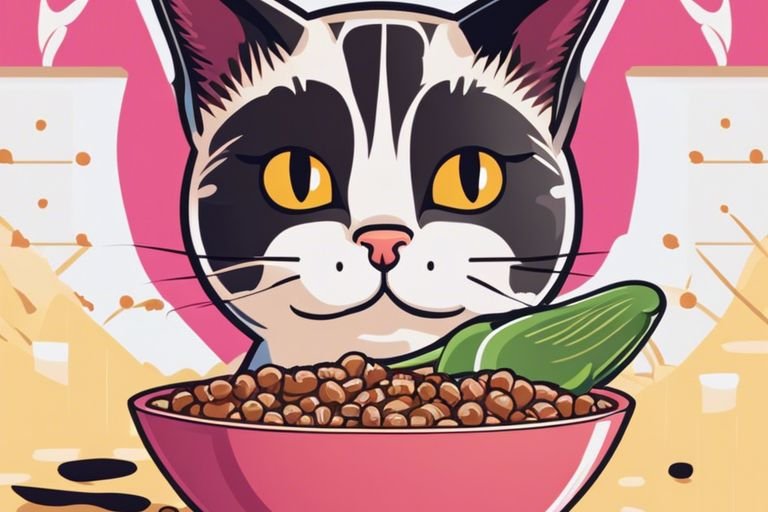
The Problem with Gluten in Cat Food
Even though your cat’s food may seem harmless, it’s necessary to understand the impact of gluten in their diet. If you’re considering switching to gluten-free wet cat food, you may wonder why this change is necessary. To learn more about transitioning your cat to a grain-free diet, check out this article on How To Change Your Cat’s Diet To Grain Free.
What is Gluten and Why is it Harmful to Cats?
For your feline companion, gluten is a type of protein found in grains like wheat, barley, and rye. While some cats may not have a severe reaction to gluten, others can develop sensitivities or allergies to this protein. Gluten intolerance in cats can lead to digestive issues, skin irritations, and even inflammatory conditions. Therefore, eliminating gluten from your cat’s diet can help alleviate these potential health concerns.
Common Sources of Gluten in Cat Food
A necessary aspect to consider when choosing cat food is to be aware of common sources of gluten. Some cat food products contain grains like wheat gluten as a protein source. Additionally, ingredients such as gluten meal or vegetable proteins derived from gluten-containing grains may also be present in certain cat food formulas. By carefully reading the labels and opting for gluten-free wet cat food, you can ensure that your feline friend receives a diet that aligns with their nutritional needs. Gluten is a protein that can be challenging for some cats to digest, leading to potential health issues. By understanding the sources of gluten in cat food and its harmful effects, you can make informed decisions to provide your cat with a diet that supports their overall well-being.
The Advantages of Gluten-Free Wet Cat Food
Improved Digestion and Reduced Inflammation
Inflammation in your cat’s digestive system can lead to various health issues, such as irritable bowel syndrome and inflammatory bowel disease. By feeding your cat gluten-free wet food, you can reduce the chances of triggering inflammatory responses in their gut. The absence of gluten helps in easier digestion and can alleviate any discomfort or bloating your cat may experience.
Enhanced Nutrient Absorption and Bioavailability
An necessary benefit of gluten-free wet cat food is that it allows for enhanced nutrient absorption and bioavailability. When your cat consumes food without gluten, their digestive system can better absorb necessary vitamins and minerals, promoting overall health and well-being. This means that your cat can derive more nutritional value from their meals, leading to a healthier and more vibrant pet.
Nutrient absorption is a crucial aspect of your cat’s health. With gluten-free wet food, your cat is more likely to absorb the necessary nutrients effectively, supporting their immune system, energy levels, and vitality. This can contribute to a healthier coat, stronger muscles, and improved overall health in your feline companion.
Lower Risk of Food Allergies and Sensitivities
Bioavailability refers to how easily nutrients can be absorbed and utilized by your cat’s body. By opting for gluten-free wet cat food, you are reducing the potential risk of food allergies and sensitivities in your pet. Gluten is a common allergen for many cats, and eliminating it from their diet can help minimize the chances of adverse reactions and digestive issues. Your cat is less likely to experience discomfort, itching, or gastrointestinal problems when consuming gluten-free food.
Risk is mitigated significantly when you choose gluten-free wet cat food, as you are providing your feline companion with a diet that is gentle on their digestive system and less likely to trigger allergic responses. This can lead to a happier and healthier cat, free from the discomfort and complications that food sensitivities can bring.
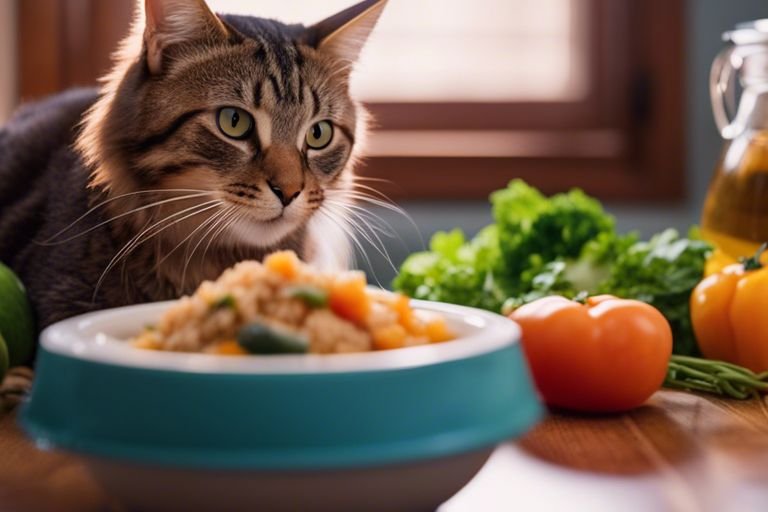
Key Ingredients to Look for in Gluten-Free Wet Cat Food
Many pet owners often wonder what key ingredients they should look for in gluten-free wet cat food to ensure their furry friend gets the best nutrition possible. Here are some important components to consider:
High-Quality Protein Sources (e.g., Chicken, Salmon)
The cornerstone of a cat’s diet should be high-quality protein sources like chicken and salmon. Protein is important for your cat’s overall health, providing the necessary building blocks for strong muscles, healthy skin, and a shiny coat. When choosing gluten-free wet cat food, make sure that the protein sources are listed as the first few ingredients, indicating a higher concentration of these important nutrients.
Whole Vegetables and Fruits (e.g., Sweet Potatoes, Green Peas)
Whole vegetables and fruits such as sweet potatoes and green peas not only add important vitamins and minerals to your cat’s diet but also contribute to the fiber content, aiding in digestion. These ingredients are rich in antioxidants, which help support your cat’s immune system and overall well-being. When browsing for gluten-free wet cat food, look for products that contain whole vegetables and fruits to ensure a well-rounded diet for your feline friend. A diverse range of whole vegetables and fruits such as sweet potatoes and green peas in your cat’s gluten-free wet food can provide a mix of important nutrients that contribute to their overall health and vitality.
Healthy Fats and Oils (e.g., Omega-3, Coconut Oil)
Omega-3 fatty acids and healthy oils like coconut oil are crucial for your cat’s skin and coat health, joint function, and overall cognitive function. Including these healthy fats in your cat’s diet can help promote a shiny coat and healthy skin, as well as support their cognitive development. When choosing gluten-free wet cat food, ensure it contains sources of Omega-3 fatty acids and healthy oils to provide your cat with a well-balanced diet. For instance, incorporating Omega-3 fatty acids from fish oil or coconut oil in your cat’s gluten-free wet food can offer numerous health benefits and support their overall well-being.
Debunking Common Myths About Gluten-Free Diets for Cats
Once again, let’s address some common myths surrounding gluten-free diets for your feline friends. Many cat owners believe that opting for a gluten-free diet for their pets is not only a hassle but also heavy on the wallet. Let’s clear the air on these misconceptions.
Gluten-Free Diets are Too Expensive
Contrary to popular belief, gluten-free wet cat food doesn’t have to break the bank. While some specialty brands may come with a higher price tag, there are plenty of affordable options available that provide balanced nutrition for your cat. Additionally, when you consider the potential health benefits of a gluten-free diet for your furry companion, the cost becomes a worthwhile investment in their well-being.
Gluten-Free Diets are Limited in Options
In terms of gluten-free wet cat food, the belief that choices are limited is a misconception. In recent years, the pet food industry has seen a surge in gluten-free offerings, providing a wide range of flavors and formulations to suit your cat’s preferences. From chicken to fish to venison, there are plenty of options to keep your cat satisfied and nourished.
Limited options can make mealtime more exciting for your cat. By rotating between different flavors and varieties of gluten-free wet cat food, you can prevent mealtime boredom and ensure that your cat receives a diverse array of nutrients necessary for their health and well-being.
Gluten-Free Diets are Unnecessary for Healthy Cats
Some cat owners may believe that gluten-free diets are only necessary for cats with specific dietary restrictions or sensitivities. However, even healthy cats can benefit from a gluten-free diet. Gluten is a common allergen for cats and eliminating it from their diet can help prevent potential digestive issues and allergies. By opting for a gluten-free wet cat food option, you are proactively supporting your cat’s overall health and well-being.

Making the Transition to Gluten-Free Wet Cat Food
Gradual Introduction to Minimize Digestive Upset
For a seamless transition to gluten-free wet cat food, it’s vital to introduce the new diet gradually. Start by mixing a small amount of the gluten-free wet food with your cat’s usual food. Over the course of a week, gradually increase the proportion of the new food while decreasing the old food. This slow transition helps prevent digestive upset and allows your cat’s system to adjust to the new ingredients.
Monitoring Your Cat's Health and Adjusting as Needed
Adjusting to a new diet can take time, so it’s crucial to monitor your cat’s health during the transition period. Keep an eye on your cat’s eating habits, litter box usage, coat condition, and overall behavior. If you notice any concerning changes, consult your veterinarian for guidance. You may need to adjust the portion sizes or the type of gluten-free wet cat food to better suit your cat’s needs.
Upset: Digestive upset can occur when introducing a new diet, especially if the transition is too abrupt. Signs of digestive upset in cats may include vomiting, diarrhea, or changes in appetite. If your cat experiences any of these symptoms, slow down the transition process and consult your vet if the issues persist.
Tips for Choosing the Right Gluten-Free Wet Cat Food
- Look for gluten-free wet cat food that is specifically formulated for your cat’s life stage, whether it’s kitten, adult, or senior.
- Check the ingredient list to ensure it contains high-quality protein sources and vital nutrients for a balanced diet.
The key is to choose gluten-free wet cat food that meets your cat’s individual dietary needs and preferences. Experiment with different flavors and textures to find the best option that your cat enjoys while providing the necessary nutrients for optimal health.
Plus: When opting for gluten-free wet cat food, consider consulting with your veterinarian for recommendations tailored to your cat’s specific health requirements. They can provide valuable insight into which brands or formulations may work best for your furry friend.
Final Words
Following this exploration of the benefits of gluten-free wet cat food, you now have a deeper understanding of how this type of diet can be both delicious and nutritious for your feline friend. By choosing gluten-free options, you can help your cat avoid potential allergic reactions, digestive issues, and overall improve their health and well-being. Remember to always consult with your veterinarian when making changes to your pet’s diet to ensure they receive the best possible nutrition.
FAQ
Q: What is gluten-free wet cat food?
A: Gluten-free wet cat food is specially formulated cat food that does not contain any gluten, a protein found in wheat, barley, and rye that some cats may have trouble digesting.
Q: Why choose gluten-free wet cat food?
A: Many cat owners choose gluten-free wet cat food because it can be easier on their cat’s digestive system, especially if their cat has sensitivities or allergies to gluten.
Q: What are the benefits of gluten-free wet cat food?
A: Gluten-free wet cat food often contains high-quality proteins, crucial vitamins, and minerals that can help support your cat’s overall health and well-being.
Q: How can gluten-free wet cat food improve my cat's coat and skin?
A: The high-quality ingredients in gluten-free wet cat food can help improve your cat’s skin and coat health, making it shinier and softer than ever before.
Q: Are there any downsides to feeding my cat gluten-free wet cat food?
A: While gluten-free wet cat food can be beneficial for cats with gluten sensitivities, it is important to ensure that your cat is still receiving a balanced diet that meets all of their nutritional needs.
